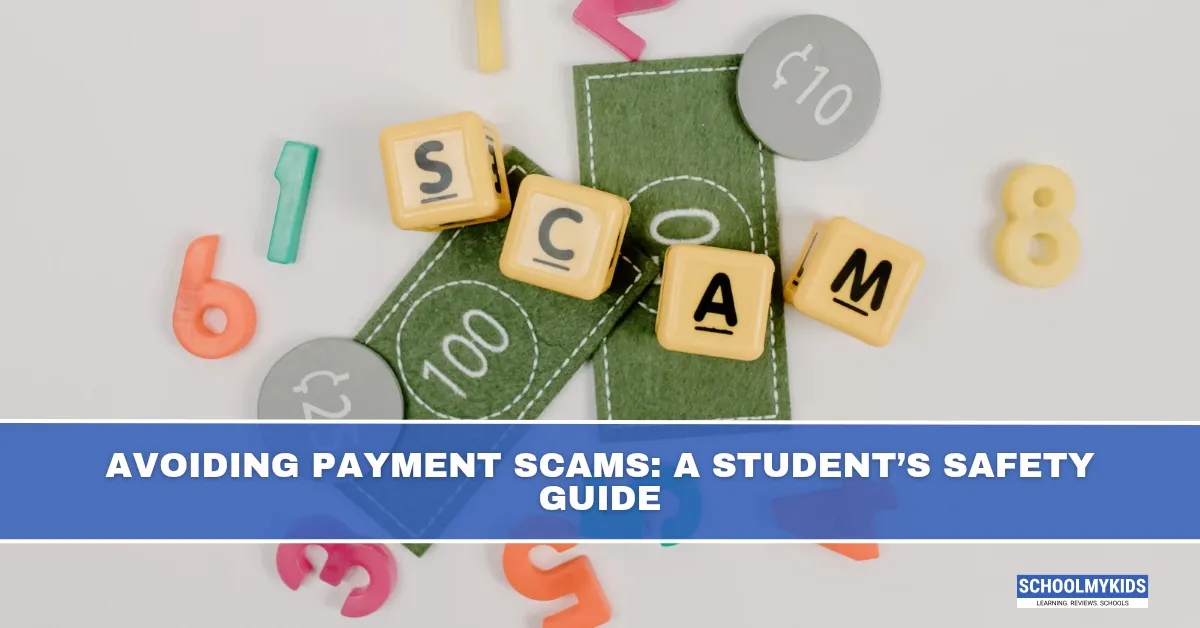In today’s digital-first world, students frequently make online payments—whether for tuition, hostel fees, online shopping, food delivery, or streaming services. Unfortunately, this has also created opportunities for scammers who prey on young people’s limited experience with financial transactions. Falling victim to such scams can cause not only monetary loss but also emotional stress. This guide aims to equip students with practical knowledge to identify, avoid, and respond to payment fraud.
Why Students Are Common Targets
- Frequent Online Transactions: From e-learning platforms to e-commerce apps, students are constantly making small but regular payments.
- Limited Awareness: Many students are still developing their financial literacy and may overlook warning signs.
- Peer Pressure & Urgency: Attractive offers, scholarships, or last-minute “discount” alerts can push students into hasty decisions.
- Digital Transition: Students from non-metro areas may be new to online banking and more vulnerable to fraud.
Common Types of Payment Scams Students Face
- Phishing Websites & Apps: Fake websites or apps that mimic real platforms to steal login details and card information.
- UPI Fraud: Scammers trick students into approving a “request money” link instead of making a payment.
- Fake Scholarships or Fee Portals: Fraudulent portals claiming to offer grants or fee payments at reduced rates.
- Online Marketplace Scams: Fraudulent sellers offering gadgets, books, or services at unbelievable discounts.
- Social Media Traps: Fake giveaways, QR code scams, or links shared through Instagram, WhatsApp, or Telegram.
- Job & Internship Scams: Fake recruiters asking students to pay “registration fees” or “security deposits.”
Red Flags Every Student Should Watch Out For
- Too-Good-To-Be-True Offers: Unrealistic discounts, “limited-time” schemes, or money-doubling promises.
- Pressure Tactics: Urgent requests like “pay now or lose the offer.”
- Unverified Sources: Payment requests from unknown email IDs, random WhatsApp numbers, or unofficial portals.
- Spelling/Grammar Errors: Fake websites often have poorly written content.
- Suspicious Payment Requests: Asking to transfer money via gift cards, wallets, or unfamiliar apps.
How Students Can Protect Themselves
- Verify Before Paying: Always double-check the website URL or app source. Official university or service portals will never redirect you to personal accounts.
- Use Secure Payment Modes: Prefer UPI with trusted apps, debit/credit cards with OTP verification, or net banking through official channels.
- Never Share OTPs or PINs: Even with close friends—scammers often pose as acquaintances.
- Enable Two-Factor Authentication (2FA): Adds an extra security layer to banking and payment apps.
- Avoid Public Wi-Fi for Transactions: Use mobile data or secure networks when making payments.
- Check for HTTPS: Look for the padlock symbol in the browser before entering card details.
- Keep Records: Save payment receipts, confirmation emails, and screenshots for proof.
- Educate Yourself: Attend financial literacy workshops offered by schools, colleges, or NGOs.
What To Do If You Fall Victim
- Report Immediately: Inform your bank or UPI provider to freeze the account or reverse suspicious transactions.
- Contact Cyber Crime Helpline (1930 in India): National helplines and cyber police units can assist in tracing fraud.
- Block Your Cards: Temporarily block debit/credit cards to prevent further misuse.
- File an FIR or Online Complaint: Many states provide cybercrime complaint portals for quick reporting.
- Alert Friends: If the scam involved your social account, notify peers so they don’t get trapped.
Building a Safe Digital Habit
- Regularly Update Apps & OS: Outdated software may have security loopholes.
- Set Transaction Limits: Keep small daily transaction caps to reduce risk.
- Stay Alert on Campus: Peer awareness programs can prevent multiple students from falling into the same scam.
- Practice Healthy Skepticism: If it feels suspicious, pause and verify before paying.
Conclusion
Payment scams are evolving rapidly, but so are the tools to fight them. For students, staying alert, informed, and cautious is the best defense. Remember, safe payments are smart payments. With a little awareness, you can protect your money and your peace of mind—ensuring that your college life remains focused on learning and growth, not financial stress.








Be the first one to comment on this story.